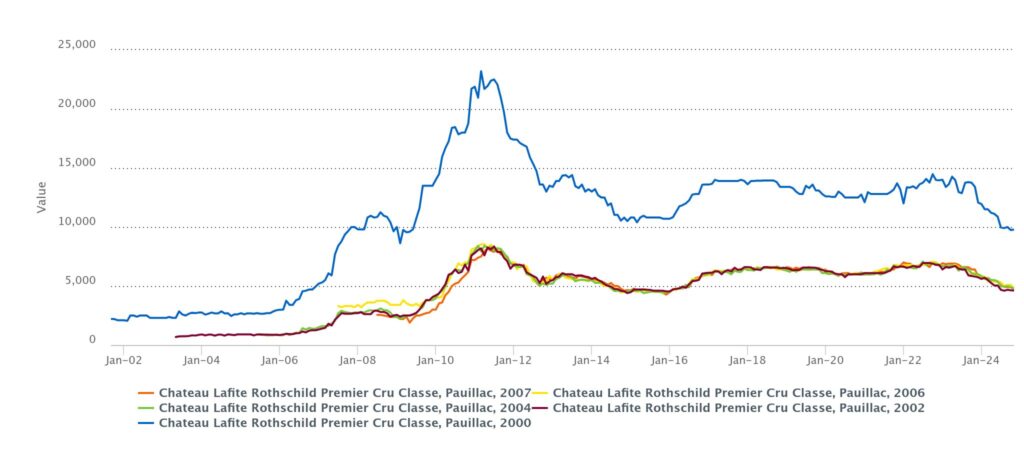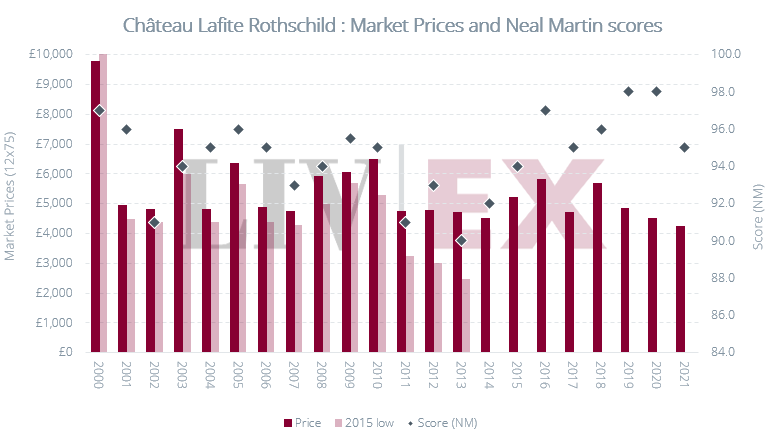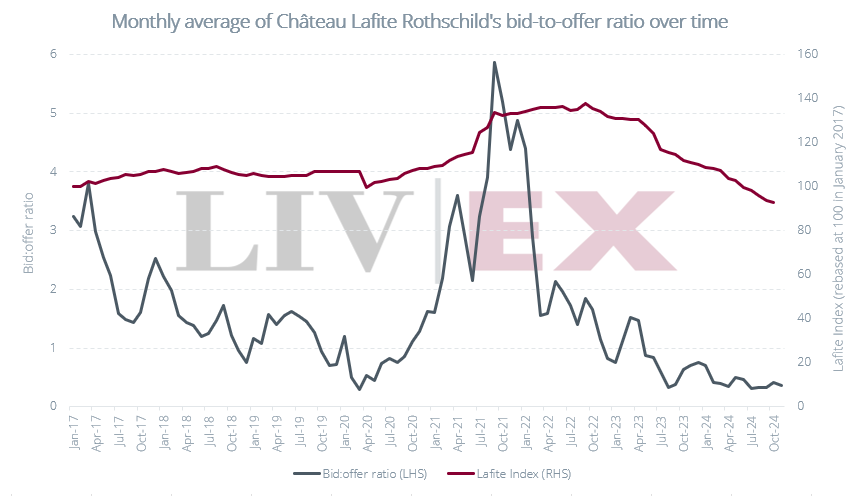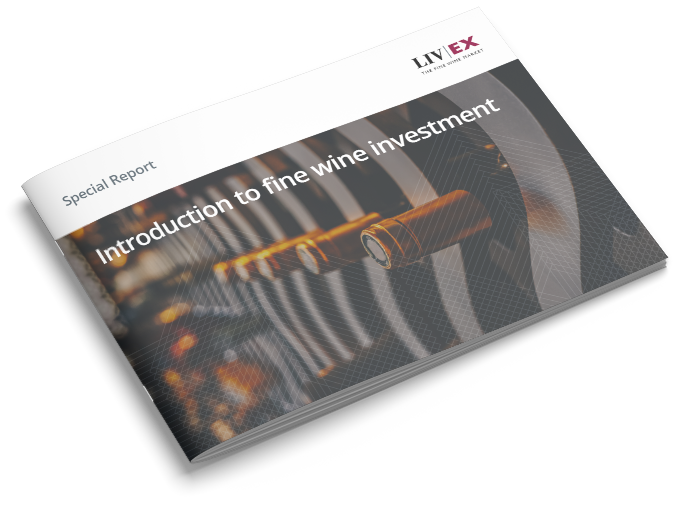What’s happening in the market?
Burgundy has climbed back into second place amongst the top-traded regions by value this week. Domaine Armand Rousseau is leading the charge, accounting for 31.9% of the region’s trade.
Overall, Château Lynch-Bages is the top-traded wine of the week so far, with the 2018, 2010, 2015 and 2019 vintages all seeing trade. All, except for the 2018 vintage, last traded above their ex-London release prices – a testament to the consistent value these wines provide to merchants and consumers alike.
Today’s deep dive: the Château Lafite Rothschild index
Château Lafite Rothschild is the top-traded wine of 2024 so far, accounting for 4.8% of traded value. Despite the clear and continued interest in this Bordeaux First Growth, its price index has declined by a significant 33% since its peak in September 2022. Today, we explore possible future price movements, using a combination of technical analysis indicators, price performance of mature vintages and Lafite’s bid-to-offer ratio.
While Lafite is one of the most liquid wines on the exchange, changing hands frequently and in significant volumes, the index is surprisingly volatile. With the Bollinger Bands widening, technical analysis would suggest the likelihood of further downward price movements.
Sitting at 484, the index has now crossed below all its key Simple Moving Averages (7-, 20-, 50- and 200- month), and found no support at its 2020 lows, further confirming the depth of the current bearish trend.
Having fallen into oversold territory in July 2023 (indicated by a Relative Strength Index level below 30), momentum has remained firmly bearish. As of the start of November, the RSI sits at 10.6. This, however, has apparently not generated a buy signal – volumes traded have remained relatively consistent.
Proponents of Fibonacci mathematics may identify the 78.6% retracement zone (5.6% below the current level) as the next possible support; others would suggest the index is more likely to fall to its horizontal support / 2015 low (20.2% below current levels). Given that the index is calculated continuously using the 10 most recent physical vintages of Lafite, this poses an interesting question – what does it mean for the price of a wine to fall to pre-release levels? Can this level be accurately determined? While, in theory, older vintages should be more expensive, the price levels at which they have found support may be useful in predicting more recent vintage support levels.
Some older vintages, as shown in the chart below, are approaching or finding support at their 2015 level, validating the horizontal as a support.
Back-vintage Lafite reaching 2015 lows
As can be seen below, a current price floor around £4,700 seems to have formed for older vintages, with those released before 2011 hovering c.10% above their 2015 lows. More recent vintages, still a good way out from their drinking windows and abundant on the market, may have slightly further to fall. Nevertheless, highly rated recent vintages – such as the 2016 and 2019 – have exhibited fairly similar price movements to mature vintages after initial price corrections and may also find support at the 2015 lows of similarly priced vintages (i.e. 2004 and 2006).
Lafite’s bid-to-offer ratio
Château Lafite Rothschild’s bid-to-offer ratio peaked a year prior to the peak of its index in September 2021 at 5.87. The current ratio, hovering between 0.3 and 0.4 for the past year, is approaching its 2020 low of 0.28. Still, the ratio has exhibited decreasing volatility over the past year – it is possible that the demand-supply balance for Château Lafite Rothschild is bottoming out. In other words, the falling prices have been met with increasingly steady demand. The ratio found its floor at the same level in early 2020, exhibiting a similar pattern of decreasing volatility in the previous years.
Liv-ex remains open 24/7, with over £150m live, actionable bids and offers. Maintaining live exposure means you can keep trading (and turn a profit) even when you’re away from your desk enjoying seasonal festivities. Speak to your broker for assistance in uploading bids/offers in bulk. Contact your broker to find out more.
Liv-ex analysis is drawn from the world’s most comprehensive database of fine wine prices. The data reflects the real-time activity of Liv-ex’s 620+ merchant members from across the globe. Together they represent the largest pool of liquidity in the world – currently £100m of bids and offers across 20,000 wines.









